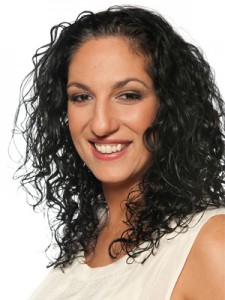TED Talks are short lectures of no longer than 18 minutes, delivered on a variety of subjects by numerous speakers.
Sherin El Feki introduces her lecture as being about pop culture in the Arab world. She then states she’s brought along an old friend and holds up a naked Barbie doll. Then she holds up a Fulla doll and introduces it as the Arab world’s answer to Barbie. The Fulla doll is dressed in a black abaya and hijab, presumably for maximum contrast.
Those who believe in the theory of a clash of civilizations may not feel that Barbie and Fulla can coexist, but El Feki explains that this has not been her experience in the Islamic world.
Note, she says Islamic world. To make an obvious point, “Arab World” and “Islamic World” are not mutually interchangeable terms, so which does El Feki actually mean? The correct usage is important, because neither world is homogeneous. The Arab world contains not just Muslims, but Christians, Druze, other religions and those who are secular. Whereas only 20% of Muslims actually live in the Arab world, not all of whom would be ethnically Arab.
However, this is not just an issue of accuracy, but of representation. If one is speaking about the Arab world in general terms, but is only mentioning Muslims, they are erasing the presence of non-Muslim Arabs. Likewise to talk of an Islamic world, as an entity, but only discuss Arab Muslims, means non-Arab Muslims are erased.
While dwelling on semantics may seem overly critical, in lecture aiming to introduce a culture to an unfamiliar audience, it is important to be specific about what culture you are discussing. Just titling her lecture as “Pop culture in the Arab Muslim World” would have avoided any such confusion.
El Feki goes on to explain that in the Arab region, where she works, Western inventions are altered and utilized in ways that are neither truly Western nor traditionally Islamic.
She gives two examples of this, the first being 4Shbab (4 Youth), a channel that uses Islamic music videos to appeal to the young. A clip is played showing both American Muslim rappers and an Arab nasheed artist. 4Shbab is summarized by El Feki as “Neither bump-and-grind, nor fire and brimstone”, but a kinder, gentler face of Islam.
She then shows a clip from an Arab music video of Haifa Wehbe writhing on a bed in her underwear. Again, the feeling is that this clip has been chosen for maximum contrast. Wehbe, while extremely popular, is definitely raunchier then most Arab pop singers, and her video is not really a typical example.
The next example is The 99, a comic book series about 99 superheroes, each of whom represents an attribute of Allah. Again, it’s creator, Nayef Al Mutawa, viewed The 99 not just as an artistic endeavor, but as a means of rescuing Islam from images of intolerance. This has obviously been a popular rescue mission, as The 99 now has a theme park and will soon have animated series with guest appearances from Wonder Woman and Spiderman.
A slide is shown of Barbie and Fulla on a white background, Barbie is stood on the far left, wearing a bikini, Fulla on the far right, again wearing a black abaya and hijab. El Feki states that to her, these examples show Islamic cross-cultural hybridization. So instead of having cultural clash or indistinguishable mash, it is a mesh in which the strands of different cultures are entwined. The Barbie and Fulla doll are shown moving together until they stand side by side.
Such a mesh is a very Islamic concept to El Feki, who explains that Islam has always encouraged borrowing and adapting from other civilizations. This is underlined by the Qur’an, she states, and the following ayah appears as a caption on the slide of Barbie and Fulla:
We made you into tribes and nations so that you could learn from one another. Sura 49:13
Such a sentiment, El Feki concludes, is wise no matter what your creed.
The acknowledgement of the existence of Islamic pop culture is in itself, refreshing, counteracting the image of the miserable Muslim. I also have no issues with the concept of a cultural mesh, as it portrays non-Western cultures being a living entity rather than enthralled or overshadowed by the West.
What I did find problematic was, yet again, women’s bodies (or representations of them) were used to display the dichotomy between Islam and the West. Contrasting bikinis with abayas is such a tired visual tactic and it again it forces a stereotype on Muslim women as dressing in one manner only. Just as Fulla has a wide variety of different outfits available to her, so do we.
This was a five-minute lecture, hence it was the briefest of overviews. So the concept of a mesh is stated, but what exactly formulates the mesh is not. In the lecture, Islam and the West were listed as the only cultural forces in the Arab world, which is incorrect and misleading. Certainly the whiff of capitalism hangs heavily over the examples shown and the issue of commercialising Islam has been discussed previously at MMW.
Therein lies the limitations of such a short format. While one is able to obtain the message that Islam and Muslims are not unilaterally hostile to Western culture, further insight into Arab Muslim culture is not really possible.
However, the big pachyderm puzzle is why do Muslim have to prove or explain that their culture is compatible with the West? By having to illustrate that Islam is not hostile, Western culture is set up as a master who must be appeased in order to survive. This means that Islamic culture is not one that can thrive freely, but one that must be curtailed in case it threatens the Western Hegemony. Ultimately, one wonders if such lectures are more about appeasing Orientalist sentiment than educating and creating co-existence.











